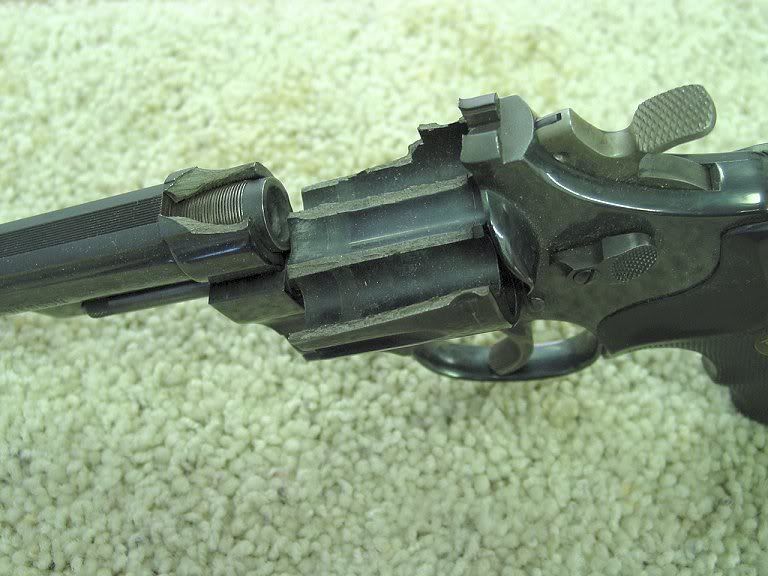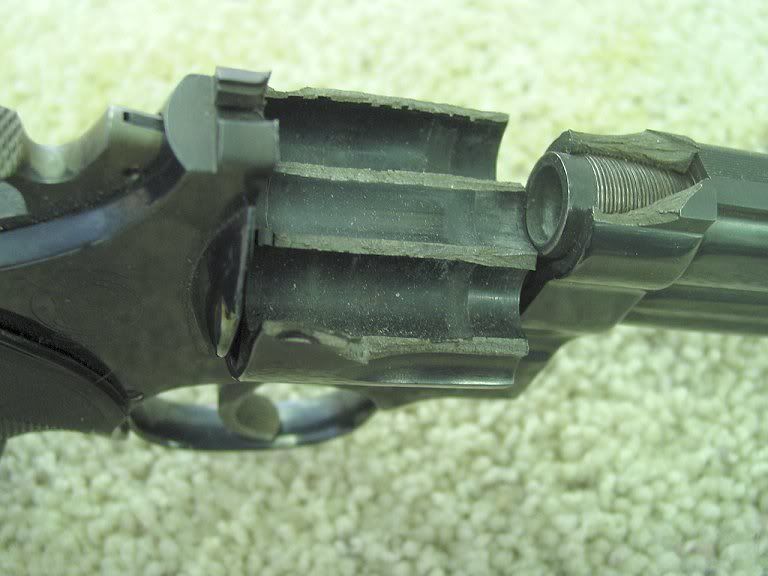First, let me start by saying that I prefer the look of an unfluted cylinder.
But I have a question.
I know that milling flutes into the cylinder - at least in theory - should make the chambers stronger. I might be remembering my Strengths of Materials classes all wrong, but having a more consistent wall thickness should make the chamber less prone to rupturing.
So, why - at least with Ruger - are all the lighter calibers fluted, and the biggest calibers unfluted? - .454, .480 SRH, and a few of the .44 SBH models.
Is it entirely a looks thing?
Is the strength gain from fluting a cylinder so low that it doesn't really matter?
Is the strength gain one of those things that works out in a "every piece of steel is 100% perfect" physics equation, but doesn't work in practice?
Or, does the fact that flutes (as commonly made) add some corners to the chamber wall actually make them weaker.
Or is it something else entirely - is having a heavier cylinder somehow a good thing in a gun with that much recoil?
It's been too long since I took the right kind of physics to figure that out myself, and asking seems easier that digging through the attic for my old text books.
But I have a question.
I know that milling flutes into the cylinder - at least in theory - should make the chambers stronger. I might be remembering my Strengths of Materials classes all wrong, but having a more consistent wall thickness should make the chamber less prone to rupturing.
So, why - at least with Ruger - are all the lighter calibers fluted, and the biggest calibers unfluted? - .454, .480 SRH, and a few of the .44 SBH models.
Is it entirely a looks thing?
Is the strength gain from fluting a cylinder so low that it doesn't really matter?
Is the strength gain one of those things that works out in a "every piece of steel is 100% perfect" physics equation, but doesn't work in practice?
Or, does the fact that flutes (as commonly made) add some corners to the chamber wall actually make them weaker.
Or is it something else entirely - is having a heavier cylinder somehow a good thing in a gun with that much recoil?
It's been too long since I took the right kind of physics to figure that out myself, and asking seems easier that digging through the attic for my old text books.



